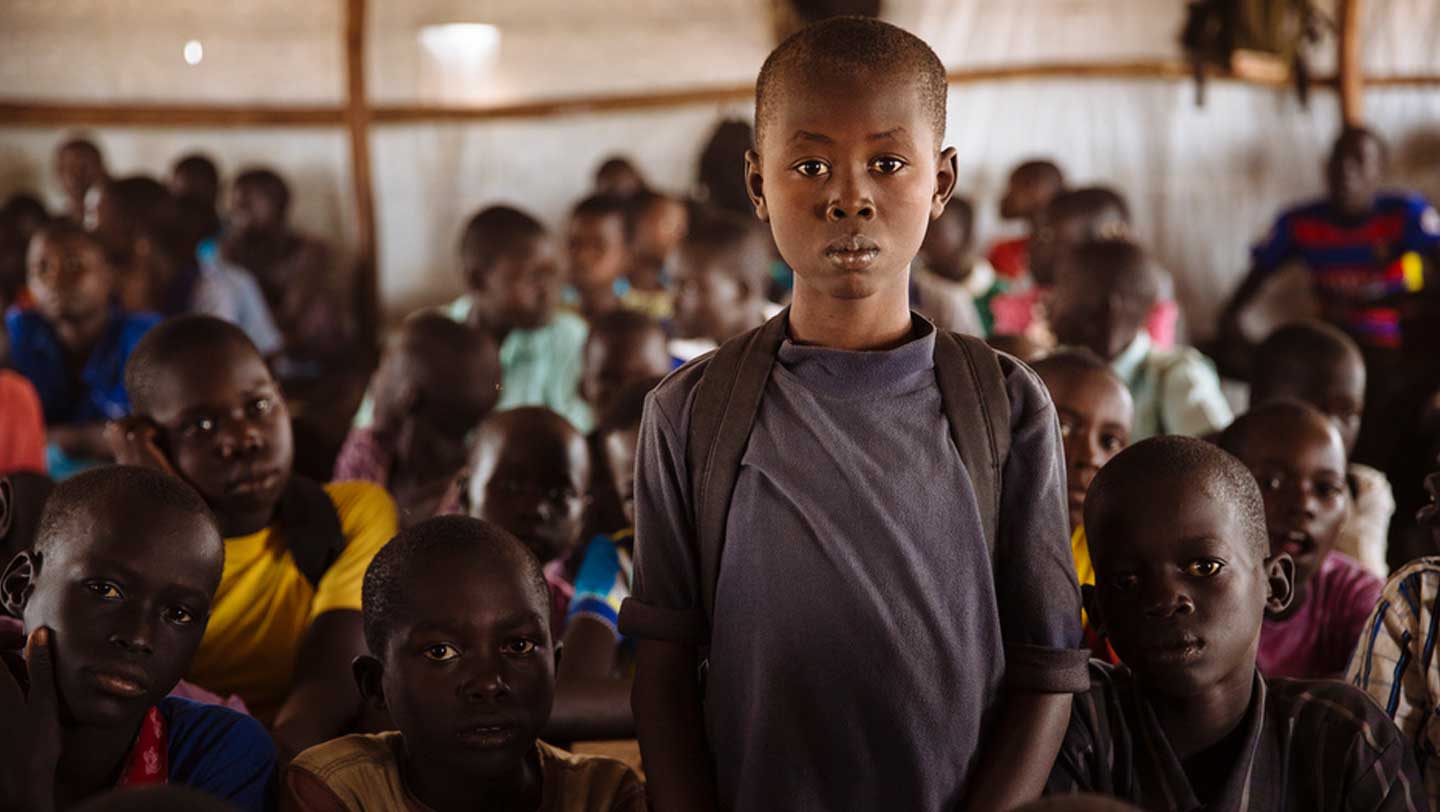Thirteen-year-old South Sudanese refugee John Luis, from Juba, South Sudan, inside a classroom at the Ofonze Primary School in Bidibidi refugee settlement, Yumbe District, Northern Region, Uganda.

Students attend a mathematics class at the Ofonze Primary School in Bidibidi refugee settlement, Yumbe District, Northern Region, Uganda.
These include some 1.5 million refugee children missing out on primary school, the report found, while 2 million refugee adolescents are not in secondary school.
“Of the 17.2 million refugees under UNHCR’s mandate, half are children,” said Filippo Grandi, UN High Commissioner for Refugees. “The education of these young people is crucial to the peaceful and sustainable development of the countries that have welcomed them, and to their homes when they are able to return. Yet compared to other children and adolescents around the world, the gap in opportunity for refugees is growing ever wider.”
The report, “Left Behind: Refugee Education in Crisis”, compares UNHCR sources and statistics on refugee education with data from UNESCO, the United Nations educational, scientific and cultural organization, on school enrolment around the world. Globally, 91 per cent of children attend primary school. For refugees, that figure is far lower at only 61 per cent – and in low-income countries it is less than 50 per cent.
As refugee children get older, the obstacles increase: only 23 per cent of refugee adolescents are enrolled in secondary school, compared to 84 per cent globally. In low-income countries a mere 9 per cent of refugees are able to go to secondary school.
For tertiary education the situation is critical. Across the world, enrolment in tertiary education stands at 36 per cent. For refugees, despite big improvements in overall numbers thanks to investment in scholarships and other programmes, the percentage remains stuck at 1 per cent.
The international community will fail to attain its Sustainable Development Goals – 17 goals aimed at transforming the world by 2030 – if it does not act to reverse these trends. Goal four, “Ensure inclusive and quality education for all and promote lifelong learning”, will not be realized without meeting the educational needs of vulnerable populations, including refugees and other forcibly displaced people. And many other development goals targeting health, prosperity, equality and peace will be undermined if education is neglected.
The report calls for education to be considered fundamental to the response to refugee emergencies, and for it to be supported by long-term planning and reliable funding. It urges governments to include refugees in their national education systems as the most effective, equitable and sustainable response, and highlights some of the notable efforts made towards implementing such a policy – even in countries where resources are already stretched.
The findings further underline the importance of quality teaching, and of the national and international support networks needed to keep teachers trained, motivated and able to make a positive impact in the world’s toughest classrooms. Numerous personal stories featured in the report demonstrate that while refugees are desperate to get an education – well aware of the transformative effect it can have on their lives – there are far too few teachers, classrooms, text books and support mechanisms to meet such enormous demand.
This is the second annual education report from UNHCR. The first, “Missing Out”, was released in advance of the UN General Assembly’s Summit for Refugees and Migrants last September. The New York Declaration for Refugees and Migrants, signed by 193 countries, put education at the forefront of the international response.
“Despite the overwhelming support for the New York Declaration, one year on, refugees are in real danger of being left behind in terms of their education,” said Grandi. “Ensuring that refugees have equitable access to quality education is a shared responsibility. It is time for all of us to put words into action.”
UNHCR’s report has found that the enrolment of primary-aged refugee children has risen over the past academic year, from 50 per cent to 61 per cent, thanks largely to improved policies and investment in education for Syrian refugees, as well as the arrival of refugee children in Europe, where education is compulsory. During the same time period, access to secondary education remained stagnant, with less than one in four refugee adolescents enrolling in school.
Considerable barriers remain, principally because almost one in three refugees live in low-income countries. They are the least likely to go to school – six times less likely than children globally. The countries hosting them, often already struggling to find the means to educate their own children, face the additional task of finding school places, properly trained and qualified teachers, and adequate learning materials for tens or even hundreds of thousands of newcomers who often do not speak the language of instruction and have frequently missed out on around four years of schooling.
“The progress seen in the enrolment of Syrian refugee children shows clearly the potential to turn around this crisis in education for refugee children,” said Grandi. “But the abysmal level of school enrolment for refugee children living in low-income regions clearly points to a need to invest in these often forgotten host countries.”
Stay connected: Facebook | LINE | Instagram | Twitter | TikTok
Share on Facebook Share on Twitter